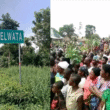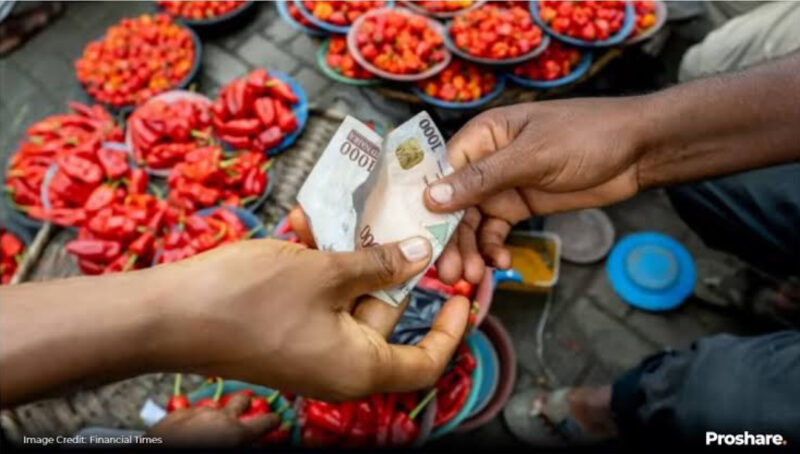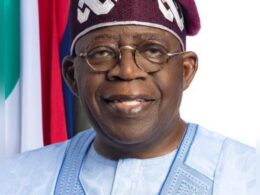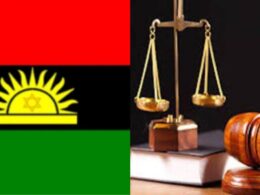Nigeria’s Inflation Rate Rises to 34.80% Amid Economic Challenges
The National Bureau of Statistics (NBS) has reported that Nigeria’s inflation rate climbed to 34.80% in December 2024, up from 34.60% in November. This marginal increase of 0.20% is mainly attributed to the heightened demand for goods and services during the festive season. Year-on-year, the December inflation rate reflects a significant rise of 5.87 percentage points, compared to 28.92% in December 2023, indicating a persistent upward trend in consumer prices.
Several economic factors are driving this increase, including currency depreciation, rising energy costs, and ongoing disruptions in supply chains. The average inflation rate over the twelve months ending in December 2024 reached 33.24%, up from 24.66% during the same period in the previous year, highlighting the inflationary pressures faced by consumers across Nigeria.
The latest Consumer Price Index (CPI) report sheds light on the states with the highest inflation rates in December 2024, revealing the rising cost of living driven by both food and non-food components. Notable inflation variations exist across different states, with factors like food inflation remaining predominant, while non-food categories such as energy, transportation, and housing also significantly affect price levels in certain areas.
Here is an overview of the ten Nigerian states with the highest inflation rates in December 2024:
10. Oyo State
Oyo State reported an all-item inflation rate of 36.93% in December, a decrease from 39.5% in November. Food inflation also saw a slight drop to 41.01% from 44.38% last month, suggesting some relief for residents despite high festive demand. Nonetheless, the elevated food inflation continues to pressure household budgets.
9. Plateau State
In Plateau, the all-item inflation rate edged up to 37.19% in December from 36.62% in November, while food inflation rose to 44.65% from 43.86%. The state’s agricultural focus means that increased demand for agricultural products during the festive season impacts prices significantly.
8. Niger State
Niger State experienced a sharp increase in all-item inflation, rising to 37.76% in December from 35.27% in November. Food inflation also notably escalated to 43.96% from 42.25%. These spikes are likely linked to logistical challenges and security issues disrupting farming communities, in addition to rising energy and transportation costs.
7. Gombe State
In Gombe, the all-item inflation rate increased slightly to 38.32% in December, up from 38.1% in November. Notably, food inflation dipped to 45.90% from 46.63%, signifying a growing influence of non-food items like energy and transportation costs on overall inflation.
6. Jigawa State
Jigawa recorded an all-item inflation rate of 38.73% in December, up from 37.5% in November. Food inflation also rose to 43.74% from 42.32%, indicating that festive demand impacts prices in this agriculturally dependent state. Rising input costs and limited market access are also significant contributors to increasing food prices.
5. Anambra State
Anambra’s inflation rate decreased slightly to 39.37% in December, compared to 40.48% in November. Food inflation also fell to 43.03% from 45.94%, likely reflecting improvements in food supply chains for staples like rice and yam. However, persistent transportation costs and non-food price pressures remain concerns.
4. Zamfara State
Zamfara experienced a slight rise in all-item inflation to 39.63% in December from 39.41% in November, with food inflation increasing to 46.39% from 46.01%. Continued food production and distribution challenges, likely exacerbated by security issues, contribute to the sustained high food inflation. Rising costs in essential services also factor into the state’s inflation levels.
3. Kebbi State
Kebbi’s all-item inflation rate fell slightly to 41.47% in December from 42.4% in November, with food inflation also decreasing to 45.01% from 46.29%. This suggests some easing in price pressures, possibly due to improved food supply conditions; however, the high food inflation rate indicates ongoing pressures, especially for staple grains in the state.
2. Sokoto State
Sokoto saw a dramatic increase in both all-item and food inflation rates. All-item inflation surged to 42.43% in December from 38.7% in November, while food inflation rose sharply to 57.47% from 51.3%. The significant uptick reflects increased food demand due to the festive season, along with production and distribution challenges, compounded by the state’s proximity to conflict zones.
1. Bauchi State
Bauchi retained its status as the state with the highest inflation rate, recording 44.06% in December, a slight decline from 46.2% in November. Food inflation also decreased to 39.37% from 40.48%, possibly due to seasonal adjustments following harvests. Despite this decline, the state’s overall inflation remains the highest in the nation, heavily influenced by non-food items such as energy costs that continue to burden household finances.










Join our Channel...